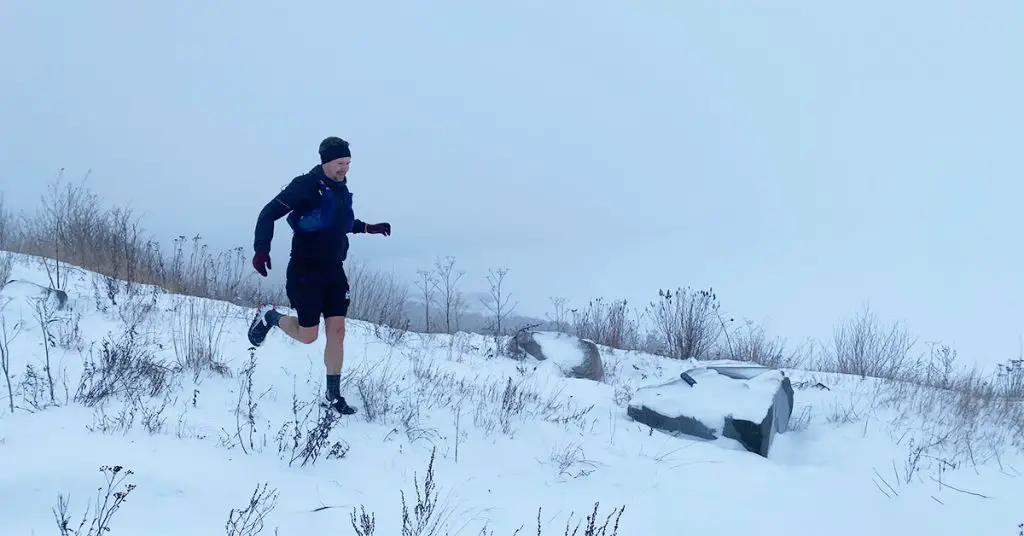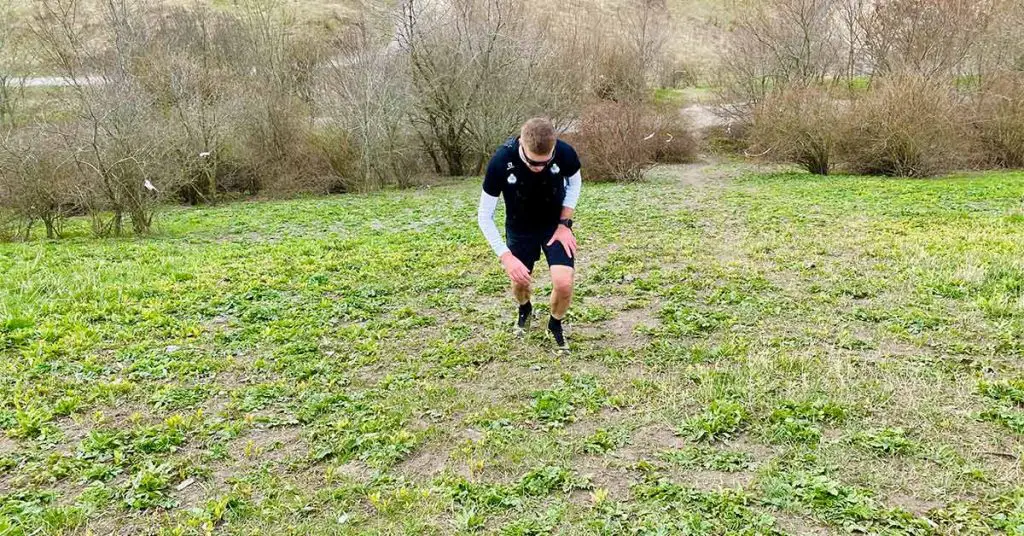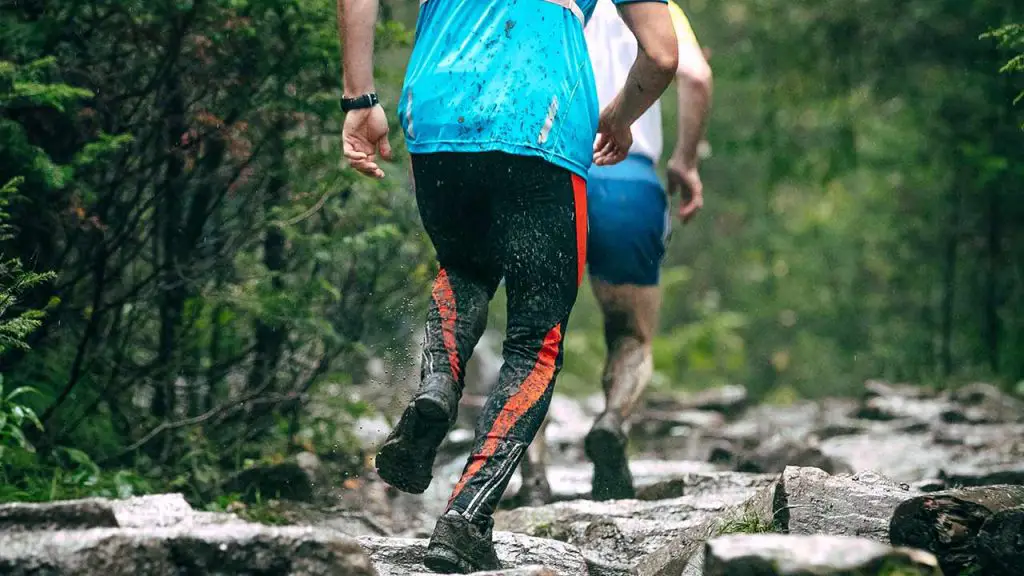Estimated read time: 4 minutes.
When the temperatures start to drop, it can be tough to know what to wear for a cold trail run. It’s essential to dress in layers so that you can adjust as needed and stay comfortable. This article will give you tips on how to dress for a cold trail running and what to wear!
What to Wear When Running in Cold Weather
Running on icy trails, frigid temperatures, and shorter daylight hours are reasonable reasons to avoid winter trail runs. With a few more clothes and some forethought, you can ditch the excuses and the treadmill this winter.
Breathable Insulation
Air is trapped in clothing composed of insulating materials and is warmed by your own body heat. Trapped air keeps you warm since it doesn’t transmit heat very well. It’s simple, yet it works.
It’s usual to find insulating characteristics in wool and down and synthetic fabrics. These materials, when stuffed into a garment, produce tiny crevices where air can accumulate. A synthetic cloth woven into channels and pockets may also be used to provide insulation, which traps air and heats it.
But you don’t want just any insulation; you need it to be breathable as well. This necessitates using materials that are both thermally insulated and permeable to air.
Layers
Insulation, however, is only one piece of the cold-weather apparel jigsaw. You’ll also want to keep out any wind, rain, or snow that may come your way. It is important to be able to change your layers depending on the weather conditions, especially on a long run. Layering is essential on every level. There are three primary layers to experiment with.
The layer nearest to your skin is referred to as the “base layer,” and it’s all about comfort. Material that quickly wicks moisture away from your skin and is quick to dry is what you’re looking for here. This layer should fit snugly around the body. You’ll get the most benefit from moisture-wicking textiles when they’re close to you.
In the same way, as the first layer focuses on comfort, the second layer focuses on insulation. With the base layer’s moisture-wicking properties, we need an insulating piece of clothing that is also breathable. Two layers may suffice for a run in dry weather or when you’re putting in extra effort. But if there’s any chance of rain, you’ll need an additional layer.
The third and final layer in the standard layering technique, the outer layer, shields you from the elements, including wind, rain, and snow. It serves as a protective layer against the weather and is most commonly worn as a running jacket or anorak. There are two options: weatherproof (a breathable layer that isn’t totally waterproof) or waterproof (a membrane-encased layer that provides full protection from wind and rain).
There you go. If the weather and the nature of the run dictate that you need more or fewer layers of clothing, then so be it. Layering allows you to adjust your outfit as you go, which is a great benefit. Layering isn’t limited to the upper body; shorts worn over running tights, for example, can provide additional protection for the legs.
Head and Extremities
You’ll also want to keep your head and extremities warm. A hat is a must, and gloves or mittens (depending on how cold it is). Mittens are warmer than gloves because all of the fingers are together in one compartment; this prevents the heat from escaping through your fingertips.
Trail Running Winter Shoes
If you’re running in cold weather, your shoes will need to be up for the task. Look for a shoe with good insulation and water resistance. A Gore-Tex membrane is ideal as it’ll keep your feet dry while still allowing them to breathe. It’s also essential that the shoes have a lugged sole or spikes so that they can handle the slippery conditions that often go hand-in-hand with cold weather. In addition, they should have a rock plate to protect your feet from sharp rocks and other debris on the trail.
As you can see, there’s quite a bit of thinking about when it comes to picking out winter running gear. You’ll need more than just a good pair of shoes. But with a little bit of planning, you can make sure that you’re well-equipped to take on those winter trails.
Safety Tips for Running in the Cold
When running in the cold, it’s vital to take your safety seriously. Below are some tips for staying safe during a winter run:
- Make sure someone knows where you’ll be and when you’ll be back if something goes wrong. This applies whether you’re running alone or with others. In case of emergency, there’s no substitute for a well-informed friend who can alert the authorities.
- Be careful of black ice, which is thin and transparent enough that you might not always notice it on the trail. But if you do encounter some, tread lightly or avoid it altogether. A fall onto this kind of ice could mean a significant injury to oneself.
- Dress in bright colors so that others can see you, even in low light. And don’t forget to bring a headlamp or some other form of illumination for darker trails.
- Carry a phone with you in case of emergency.
Conclusion
With a little bit of extra preparation, you can continue running your favorite trails throughout the winter. Just be sure to consider the colder temperatures and slippery conditions, and dress appropriately. And most importantly, stay safe while out on the trail!
- How Many Laps Around a Track is a 5K: Your Guide - October 22, 2023
- When is Track and Field Season? - October 22, 2023
- Understanding the Length: How Long Is a Running Track? - October 22, 2023



